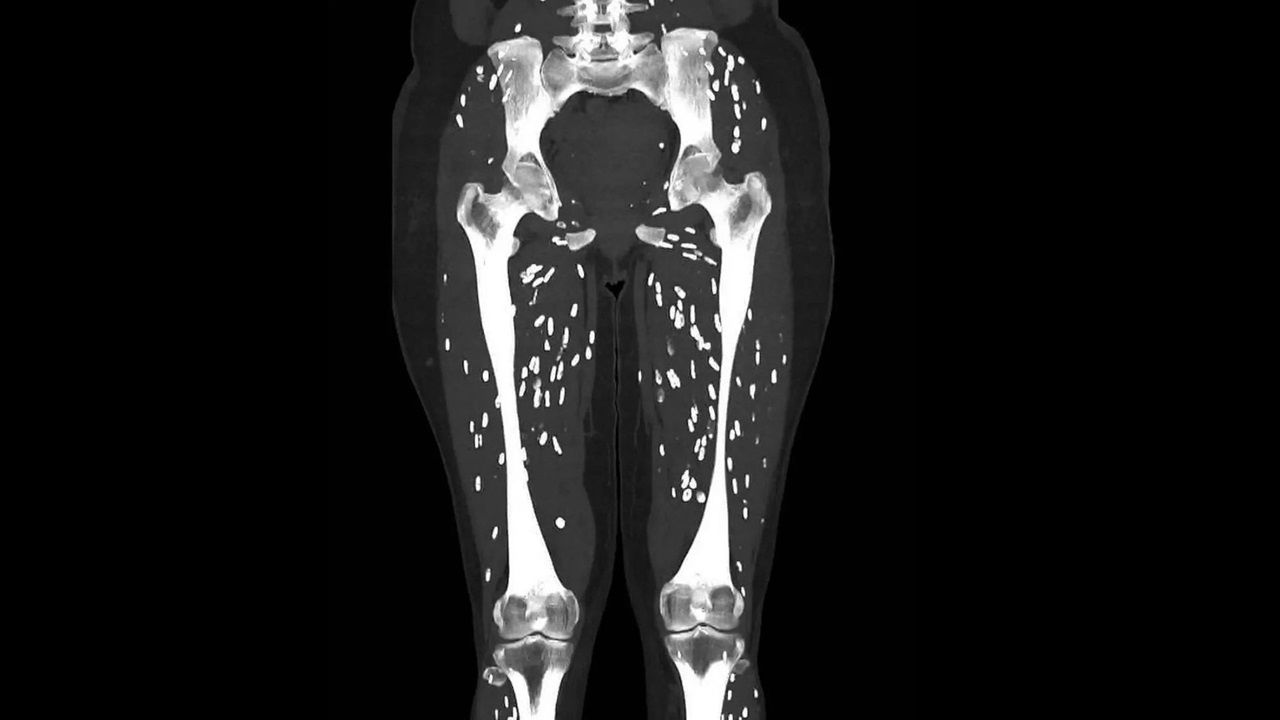
A recent post by a U.S.-based emergency medicine physician, Dr. Sam Ghali, has brought widespread attention to the dangers of consuming undercooked pork. The doctor shared an shocking CT scan image showing the severe effects of a parasitic infection caused by the pork tapeworm, scientifically known as Taenia solium.
Dr. Ghali, who often shares medical case studies on social media, described this case as one of the most astonishing CT scans he has encountered. The image shows the limbs of a patient suffering from cysticercosis, a parasitic infection that occurs when a person ingests the larval cysts of Taenia solium. According to Dr. Ghali, the life cycle of this parasite is complex and dangerous.
Humans typically become infected with Taenia solium by consuming undercooked pork that contains cysts. Over a period of several weeks, these cysts mature into adult tapeworms within the gastrointestinal tract, leading to a condition known as intestinal taeniasis. These adult tapeworms produce eggs, which are then excreted in human feces.
Dr. Ghali highlighted the critical point in the infection process: cysticercosis only develops when these eggs are ingested through fecal-oral transmission. After ingestion, the eggs release larvae that penetrate the intestinal wall and enter the bloodstream, spreading to various parts of the body, including the brain, eyes, subcutaneous tissues, and skeletal muscles.
The larvae eventually form cysts, known as cysticerci, wherever they lodge in the body. The host’s immune response typically kills the cysts, leading to calcification. These calcified cysts are visible on CT scans and are often referred to as "rice grain calcifications."
One of the most severe forms of this condition occurs when the larvae reach the brain, causing neurocysticercosis. This can lead to a range of neurological problems, including headaches, seizures, and confusion. While the prognosis for cysticercosis is generally positive, some cases can be fatal.
The global impact of cysticercosis is significant, with an estimated 50 million people infected annually, resulting in approximately 50,000 deaths. Treatment options include anti-parasitic therapy, steroids, anti-epileptics (particularly for neurocysticercosis), and in some cases, surgical removal of the cysts.
Dr. Ghali concluded his post with crucial advice: maintaining hygiene, regular handwashing, and avoiding raw or undercooked pork are essential steps in preventing this potentially deadly infection.
This case serves as a stark reminder of the hidden dangers that can come from something as seemingly innocuous as undercooked pork, highlighting the importance of food safety and proper cooking practices.
Here’s one of the craziest CT scans I’ve ever seen
— Sam Ghali, M.D. (@EM_RESUS) August 25, 2024
What’s the diagnosis? pic.twitter.com/DSJmPfCy9L
Answer: Cysticercosis
— Sam Ghali, M.D. (@EM_RESUS) August 26, 2024
Cysticercosis is an infamous parasitic infection caused by ingestion of larval cysts of Taenia Solium, also known as: Pork Tapeworm
The Life Cycle is absolutely wild and sort of complicated but I'm gonna break it down here and hopefully make it easy to…
















